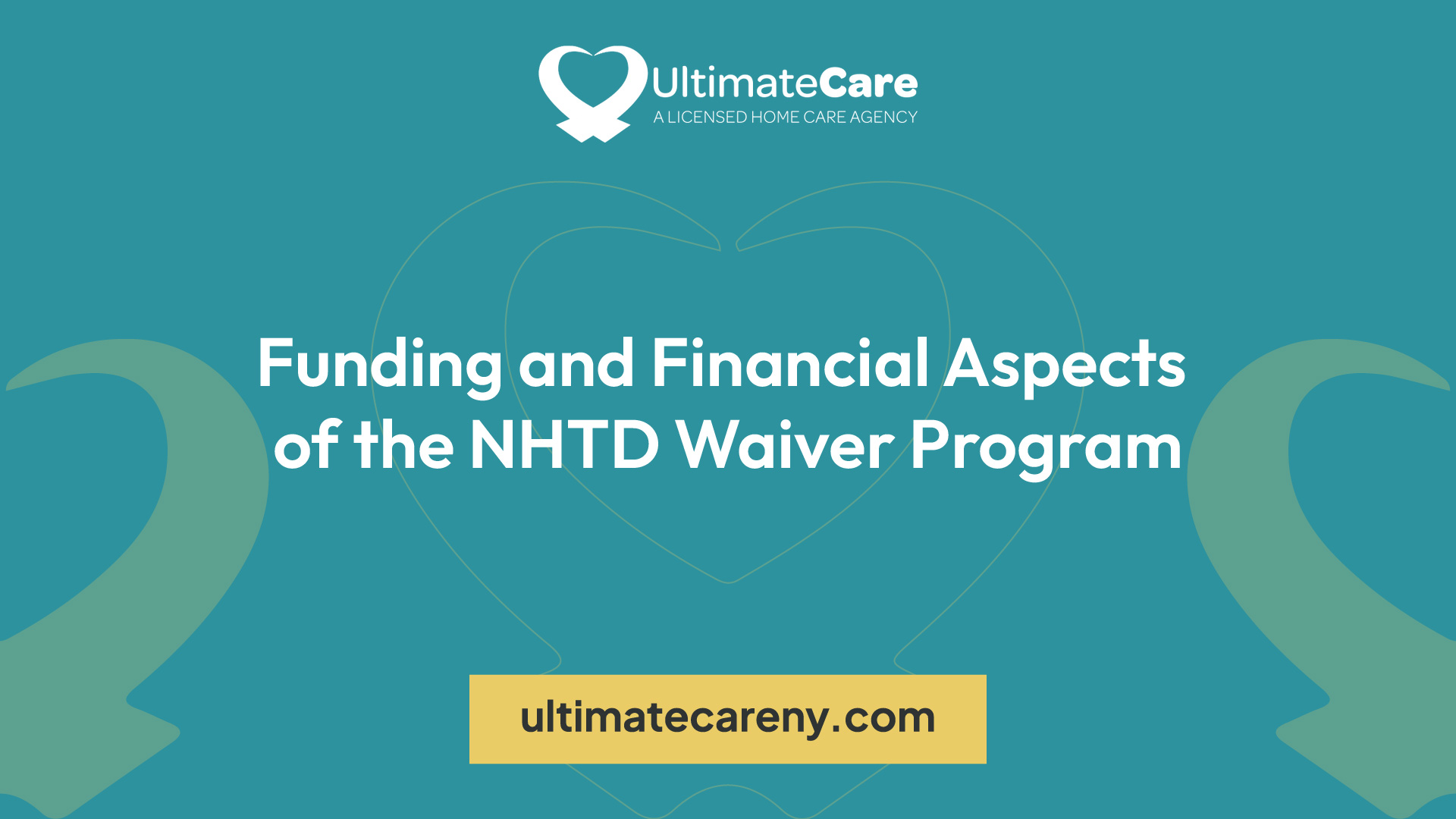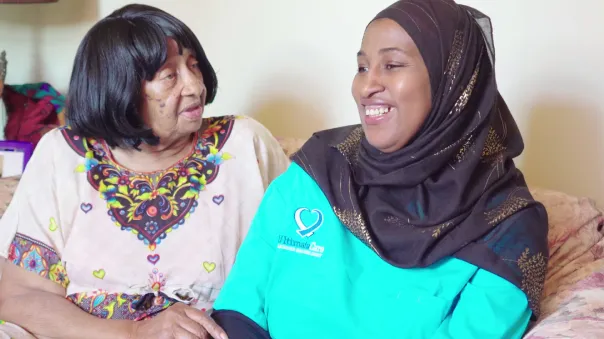Funding and Financial Aspects of the NHTD Waiver Program
Uncover the funding and financial aspects of the NHTD Waiver Program. Explore cost-neutrality requirements and state resources' impact.
The information provided in this article is for educational purposes only. If you have medical questions or concerns, please contact a qualified health care professional.
Before beginning any new exercise program, it's essential to seek advice from your healthcare provider to ensure it's safe and appropriate for your individual health condition and fitness level.
Understanding NHTD Waiver Program Funding
To comprehend the financial aspects of the NHTD Waiver Program, it is essential to examine the funding sources that sustain this program and understand how Medicaid enrollment plays a vital role in accessing waiver services.

NHTD Program Funding Source
The NHTD program is funded by the NYS Department of Health through the Money Follows the Person Program. This funding mechanism ensures that individuals with disabilities have access to the necessary services and supports to enhance their quality of life and promote independence.
Medicaid Enrollment for Waiver Services
Enrollment in Medicaid is a prerequisite for individuals seeking services under the NHTD Waiver Program. Before accessing waiver services, applicants must be enrolled in Medicaid and have appropriate coverage. In cases where individuals are not Medicaid beneficiaries, they are required to apply for Medicaid, and their eligibility should be determined by the Local Department of Social Services (LDSS) before they can receive waiver services.
Understanding the funding sources and the role of Medicaid enrollment is crucial for individuals navigating the NHTD Waiver Program to ensure that they can access the necessary support and services to meet their specific needs. By aligning funding mechanisms with program requirements, participants can benefit from the financial assistance available through the NHTD program.
Financial Aspects of NHTD Waiver Program
When examining the financial aspects of the NHTD waiver program, it is essential to consider the cost-neutrality requirements and the impact of state resources on the program's operations.
Cost-Neutrality Requirements
States participating in the NHTD waiver program are mandated to uphold strict cost-neutrality requirements to ensure financial sustainability and appropriate allocation of funding resources. This requirement entails demonstrating that the average per participant expenditures for both waiver and non-waiver Medicaid services do not exceed the average costs of providing institutional services to individuals in need of the same level of care.
Annual assessments are conducted to evaluate compliance with these cost-neutrality standards. States have the flexibility to adjust the number of individuals served based on available resources but must refrain from exceeding approved enrollment without seeking an amendment to the application [2].
Impact of State Resources
The financial stability of the NHTD waiver program is significantly influenced by the availability and management of state resources. States must ensure that the average per participant expenditures for waiver and non-waiver Medicaid services align with the average costs of providing institutional care to individuals requiring similar levels of care.
Failure to meet the cost-neutrality requirements could have far-reaching consequences, potentially affecting the services accessible to program participants. Therefore, monitoring and managing state resources effectively is paramount for the continued success and sustainability of the NHTD waiver program. Annual assessments play a vital role in evaluating compliance with these financial standards, ensuring that funding resources are allocated appropriately and transparently.
By adhering to these cost-neutrality requirements and maximizing the impact of state resources, the NHTD waiver program can maintain financial integrity, ensure the quality of care provided to participants, and uphold the program's commitment to promoting community-based services for individuals in need of long-term care.
NHTD Waiver Program Operations
Within the NHTD waiver program, the operational approval process and services for community integration play a vital role in ensuring the smooth delivery of services to individuals eligible for this program.
Operational Approval Process
The NHTD waiver program operates under the authority provided by Section 1915(c) of the Social Security Act and is approved by the Centers for Medicare and Medicaid Services (CMS) [2]. The program's operational approval process involves a series of steps to ensure compliance with regulatory standards and the effective delivery of services.
These steps, overseen by regional centers and specialists, aim to facilitate the transition of individuals from institutional settings to community living or prevent institutionalization. The coordination and approval process ensure that participants receive the necessary services tailored to their individual needs.
Services for Community Integration
Services for community integration under the NHTD waiver program are designed to support individuals with disabilities and seniors in successfully transitioning to community living. These services are especially critical when existing support services are insufficient to ensure an individual's health and welfare [2].
By providing a comprehensive range of services, the NHTD waiver program aims to empower participants, increase their independence, promote community inclusion, and encourage self-reliance and meaningful activities. This holistic approach allows individuals to have greater control over their lives and work towards achieving their goals in a supportive community environment.
State-Funded Housing Subsidy
Eligibility Criteria
Exploring the financial aspects of the NHTD Waiver Program, one notable component is the provision of a state-funded housing subsidy to assist individuals in living in the community, contingent upon the availability of funds [4]. Understanding the eligibility criteria for this subsidy is essential for those seeking support for their housing needs.
To be eligible for the state-funded housing subsidy, participants in the NHTD program must meet specific criteria set forth by the program administrators. These eligibility requirements typically include factors such as income limitations, residency status, and disability status. Additionally, participants may need to demonstrate a financial need for assistance with housing costs to qualify for the subsidy.
Participants in the TBI/NHTD Housing Program, as detailed by Ultimate Care NY, are required to contribute one-third of their income towards rent after Medicaid spend-down. The program then covers the remainder of the fair market rent directly to the landlord or designated payee, assisting eligible individuals with costs related to monthly rent, utilities, and certain one-time expenses.
Financial Assistance Details
The state-funded housing subsidy provides financial assistance to eligible participants in the NHTD program, primarily aimed at supporting individuals in maintaining their independence and living in the community. This subsidy covers various aspects of housing expenses, ensuring that participants have access to safe and suitable living arrangements while receiving necessary care services.
Participants in the TBI/NHTD Housing Program may qualify for financial support that includes assistance with monthly rent payments, utility expenses, and funding for essential home modifications to create a more accessible living environment [3]. The subsidy plays a vital role in helping individuals navigate the financial challenges associated with housing costs while ensuring they receive the care and support they need to thrive in the community.
To determine the specific amount of assistance provided through the state-funded housing subsidy, the program follows guidelines that take into account the participant's income, housing arrangements, and financial needs. Participants must demonstrate financial need, following a calculated approach that considers their available resources and the total expenses associated with housing to qualify for the subsidy.
By understanding the eligibility criteria and financial assistance details of the state-funded housing subsidy within the NHTD Waiver Program, individuals can access the necessary support to secure suitable housing, maintain independence, and receive the care services needed to enhance their quality of life within the community.
TBI/NHTD Housing Program
Exploring the financial aspects of the NHTD waiver program, one significant component is the TBI/NHTD Housing Program. This section provides an overview of the program, along with insights into its funding and limitations.
Program Overview
The TBI/NHTD Housing Program serves as a crucial resource for individuals seeking housing supports within the NHTD waiver program. Operated within the structure of the waiver program, this initiative offers financial assistance to eligible participants, aiding them in meeting costs related to monthly rent, utilities, and certain one-time expenses.
Funding and Limitations
The funding for the TBI/NHTD Housing Program is subject to annual appropriations provided through the New York State Legislature, as outlined by the New York State Department of Health. The availability of initial and continued funding is contingent upon these annual allocations, with all subsidies undergoing review and approval on a yearly basis to align with the State budget cycle.
Participants enrolled in the TBI/NHTD Housing Program are required to contribute one-third of their income towards rent post-Medicaid spend-down, as detailed by Ultimate Care New York. The program takes on the responsibility of covering the remaining portion of the fair market rent directly to the landlord or designated payee. This support eases the financial burden on eligible individuals, ensuring that they have access to stable housing while managing their budget effectively.
To maintain financial sustainability and optimal resource allocation, the TBI/NHTD Housing Program operates under a set of limitations, as mentioned by Ultimate Care NY. The program's limited funding availability requires that all subsidies be reviewed and approved annually in coordination with the State budget cycle. This rigorous oversight ensures that the allocated resources are utilized efficiently and effectively to assist participants in securing and maintaining appropriate housing arrangements.
In summary, the TBI/NHTD Housing Program plays a vital role in supporting individuals within the NHTD waiver program by providing financial assistance for housing needs. Through careful funding management and adherence to set limitations, the program aims to enhance the quality of life for participants while promoting stability and independence in their living arrangements.
Enhancing HCBS under ARPA
As part of the efforts to bolster home and community-based services (HCBS), the American Rescue Plan Act (ARPA) has introduced significant measures to enhance funding and support for these crucial programs. This section sheds light on the federal assistance increase and New York's specific spending plan to fortify HCBS under ARPA.
Federal Assistance Increase
Under the ARPA provisions, a notable 10 percent increase in the Federal Medical Assistance Percentage (FMAP) has been allocated to state Medicaid programs. This increase is aimed at supporting and supplementing existing state expenditures on HCBS. The enhanced federal funding is applicable from April 1, 2021, to March 31, 2022, providing states with additional resources to enhance the quality and accessibility of HCBS.
New York's Spending Plan
In response to the increased federal assistance provided by ARPA, New York State has embarked on a strategic spending plan to optimize HCBS for Medicaid members. This initiative encompasses substantial investments in expanding, enhancing, and strengthening HCBC services. The overarching goal is to ensure that Medicaid members receive comprehensive and high-quality care, aligning with sustainable long-term benefits and addressing critical workforce challenges that have been exacerbated by the COVID-19 pandemic.
The investments made by New York State are geared towards fostering a robust HCBS infrastructure that is not only responsive to the immediate needs of Medicaid beneficiaries but also lays the foundation for a resilient and adaptive healthcare system in the face of evolving challenges.
By leveraging the enhanced federal funding made available through ARPA, New York State is actively working towards creating a healthcare landscape that prioritizes accessibility, affordability, and quality in HCBS. These concerted efforts aim to elevate the standard of care, improve health outcomes, and fortify the support systems for individuals reliant on HCBS within the state.
References
[2]:
[3]:
[4]:
[5]:



































































































